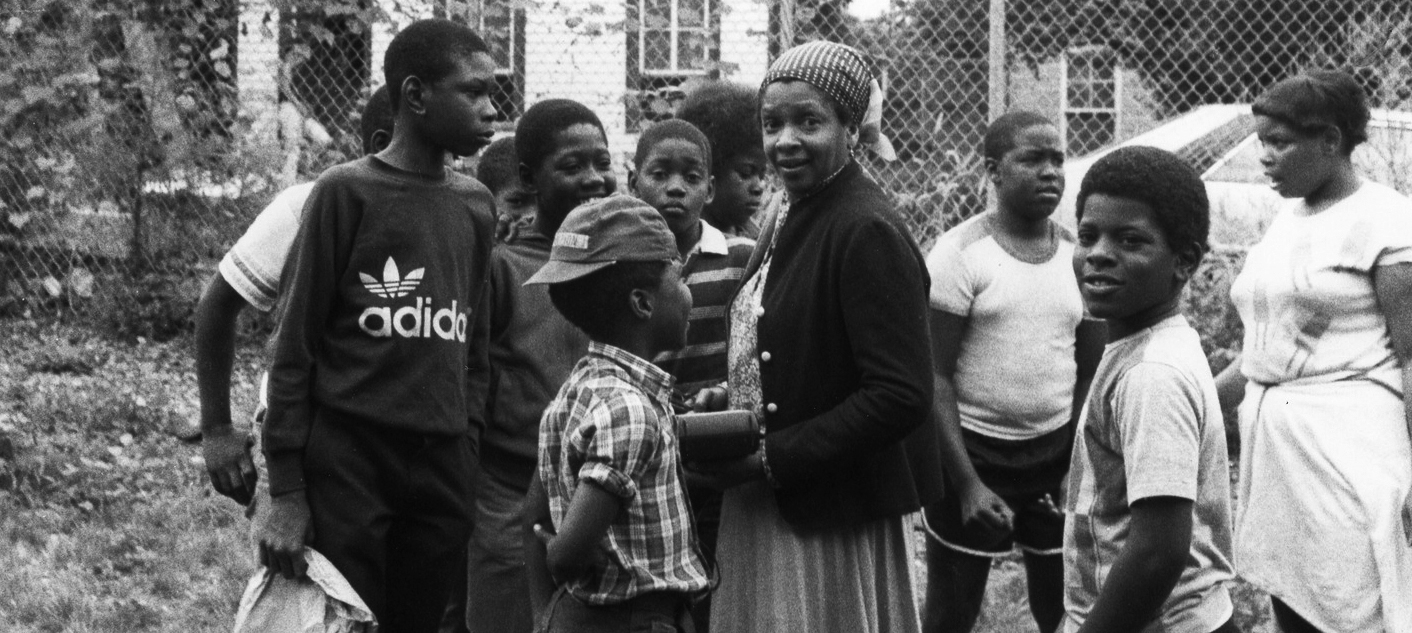The Life and Legacy of Joan Maynard
As The Laundromat Project celebrates Women’s History Month, it’s fitting that “We Write Our Own Histories” is one of the organization’s guiding values. At a time when the battle over truth, history, perspective, and power is as high-stakes as ever, the centering of women’s voices, experiences, and knowledge can be a deeply subversive and political tool. Black women and femmes have long understood this fact. Taking on formal and informal community roles, many have served as educators, archivists, genealogists, storytellers, and otherwise as keepers of collective memory. In doing so, they have done the essential work of preserving cultural knowledge and transmitting it from one generation to the next. In the process, they have oftentimes faced down deliberate efforts at manipulation, distortion, and erasure.
One such woman was the late Joan Maynard, an artist, organizer, and community historian as well as a lifelong Brooklynite. Her commitment to preserving and sharing African American history transformed the physical landscape and historical record of Bedford-Stuyvesant and Central Brooklyn. Maynard was born in 1928 to Dr. John Cooper, the son of migrants from Reconstruction-era Georgia and South Carolina, and Julia St. Bernard, an immigrant from the Caribbean island of Grenada. Her early experiences with political and arts education – from attending meetings of the Brooklyn chapter of the United Negro Improvement Association to attending classes at an art school in Harlem – helped instill in her the beauty and importance of Black history, intergenerational empowerment and solidarity, and the arts and cultural pursuits. Her first- and second-hand experiences with racial discrimination — including discussing injustices in the news and witnessing the segregation, blockbusting, and disinvestment that accompanied Black migration into her beloved Brooklyn – further convinced her to use history, the arts, and the cultural realm as tools for collective liberation and racial justice.
As an artist, Maynard (occasionally under the name Joan Bacchus) designed covers for The Crisis and Freedomways magazines. She also served as writer and illustrator for the Golden Legacy Black history comic book series. Yet, her most well-known contribution to the preservation of Black history and culture was through her role as an early leader of the Society for the Preservation of Weeksville and Bedford-Stuyvesant History. Although the history of Black Brooklynites seizing freedom and establishing the free Black community of Weeksville is more well-known today, preserved in part under the auspices of Weeksville Heritage Center, its history and location had largely been forgotten until 1968, when historian James Hurley and pilot Joseph Haynes discovered remnants of the once-thriving settlement. Following this discovery, Maynard led the grassroots preservation campaign aimed at turning the site into a museum. But, more than seeking support to construct a monument to a hallowed past, her insistence that this history was worth reviving and maintaining was also part of her conviction that Brooklyn’s contemporary Black communities and their future were worth investing in and fighting for. Over decades of fundraising, community advocacy, and dedicated leadership, Maynard’s efforts played a key role in the recovery of Weeksville’s history and the purchase, restoration, preservation and landmarking of the Historic Hunterfly Road Houses. She passed away in 2006, having spent much of her life serving as a shining example of what ordinary people can accomplish when guided by their convictions and common goals; what community revitalization looks like when people are empowered to implement it on their own terms; and how history can be used to build pride and community power.
As gentrification and community displacement threatens to erase Brooklyn’s vibrant Black histories, Maynard’s legacy remains a powerful guide for artists and neighbors who wish to preserve the area’s past in order to ensure its future. This month, let’s continue to honor the women and femmes who have devoted their loves to doing just that by being good stewards to the knowledge and contributions they have left behind.
For more information on Joan Maynard’s incredible life and legacy, I encourage you to consult the following sources:
1. “Joan Maynard” (New York Preservation Archive Project)
2. “For Valentine’s Day, a Love Letter to Joan Maynard, Activist and Artist” by Dominique Jean-Louis (essay)
3. African-American Legends: “Joan Maynard, Weeksville Society” for CUNY TV (interview)
About the Author

Dr. Amanda Boston is The LP Arts Research with Communities of Color Fellow. Dr. Boston is an assistant professor of Africana studies at the University of Pittsburgh and an Arts Research with Communities of Color Fellow at The Laundromat Project. Her research focuses on the racial operations of gentrification in Brooklyn and their role in the making and unmaking of the borough’s Black communities. During her time with The LP, Dr. Boston is conducting a research study that explores how the organization can use the arts to build community and collective neighborhood power in Bed-Stuy and beyond.
